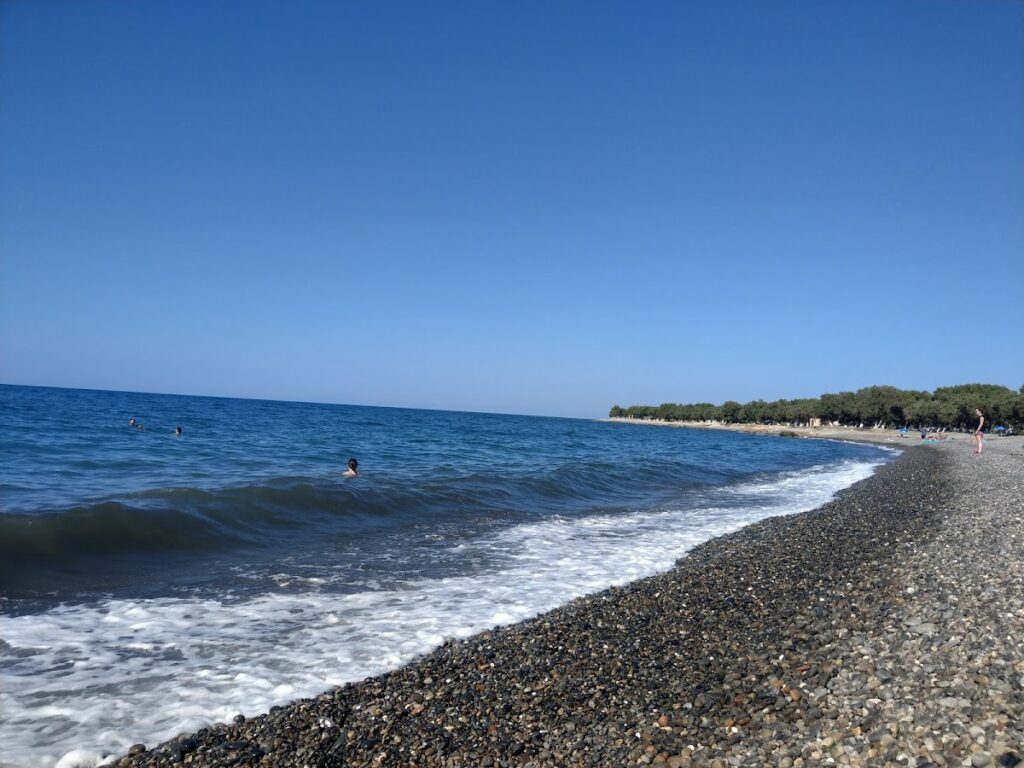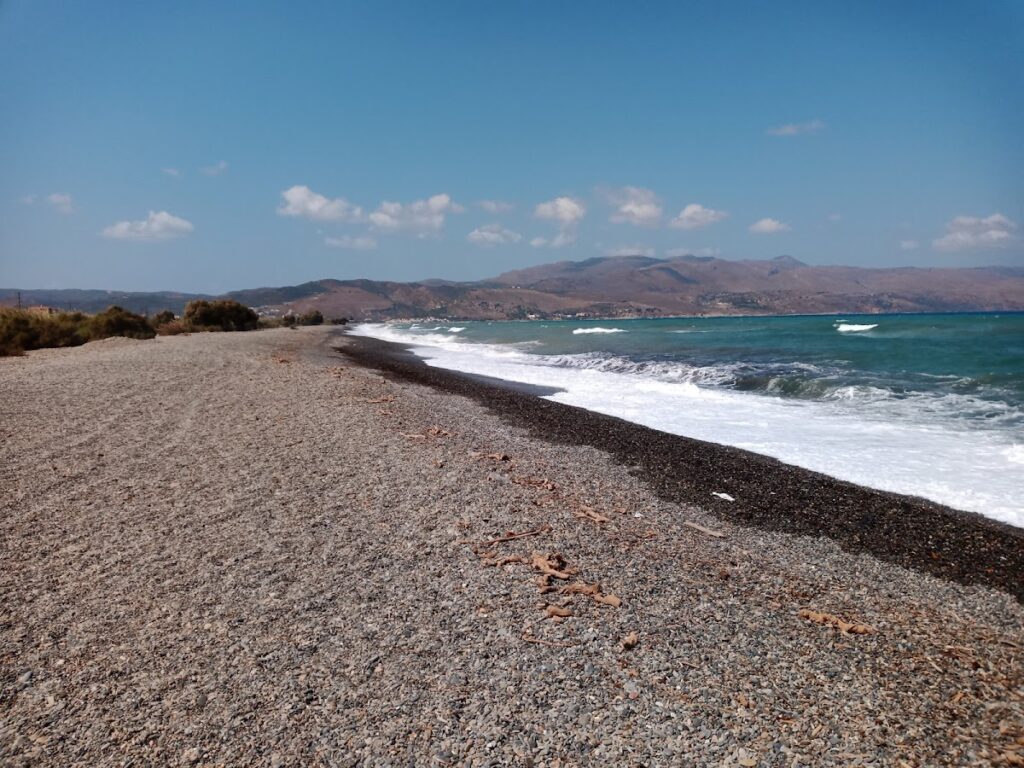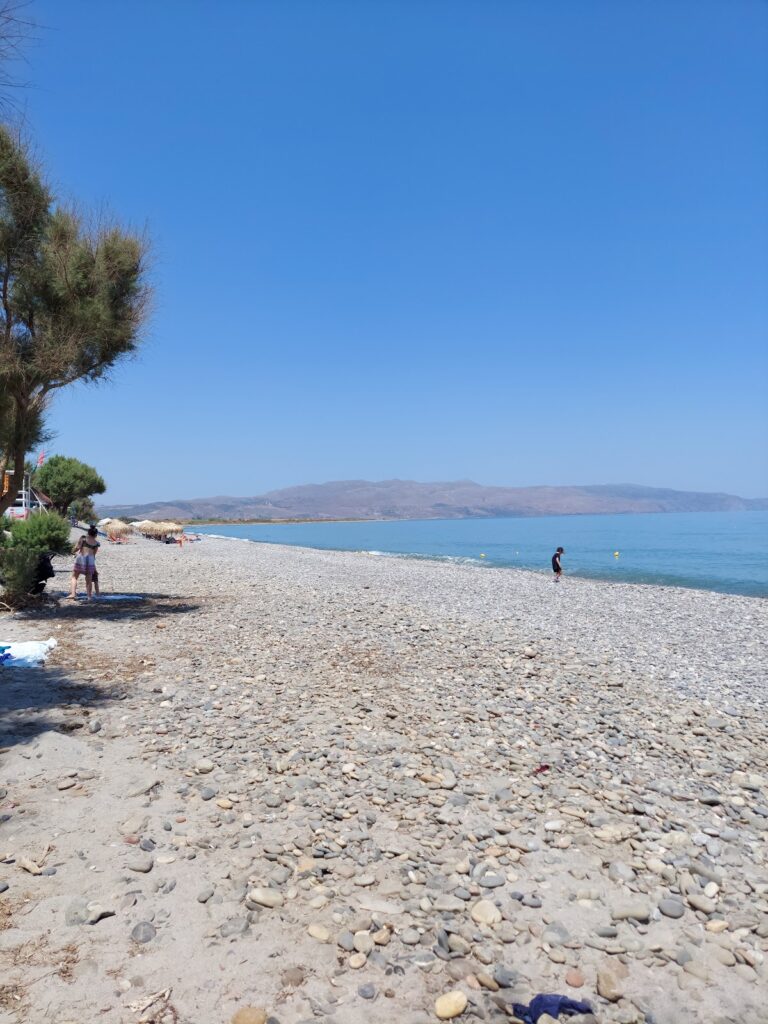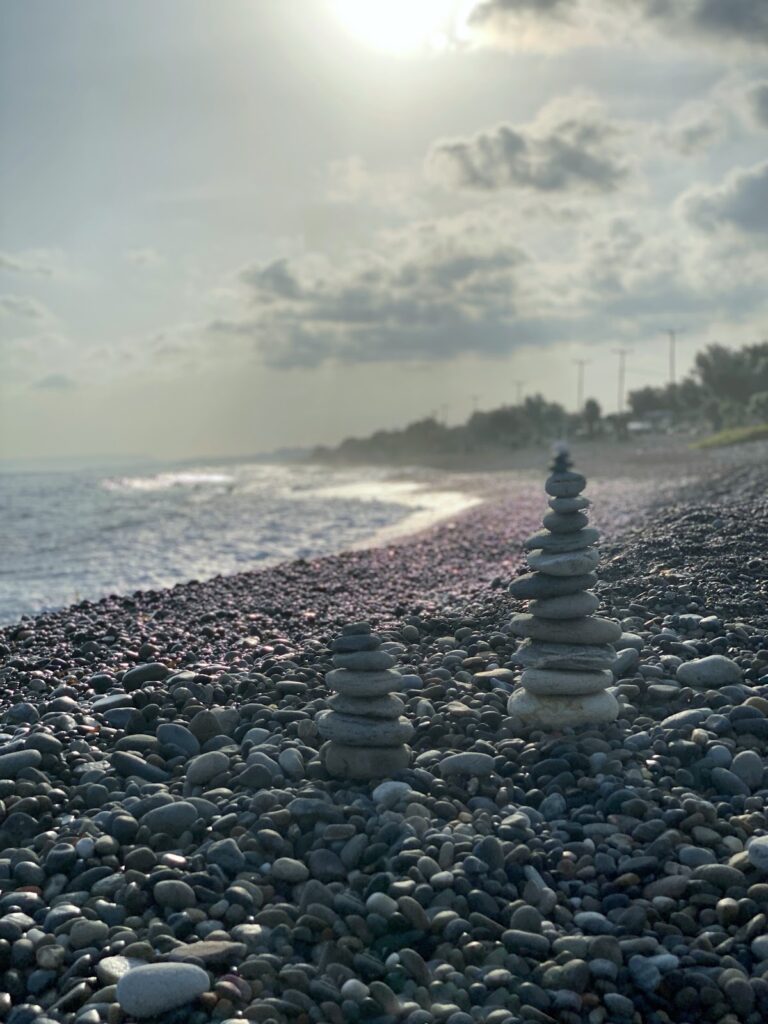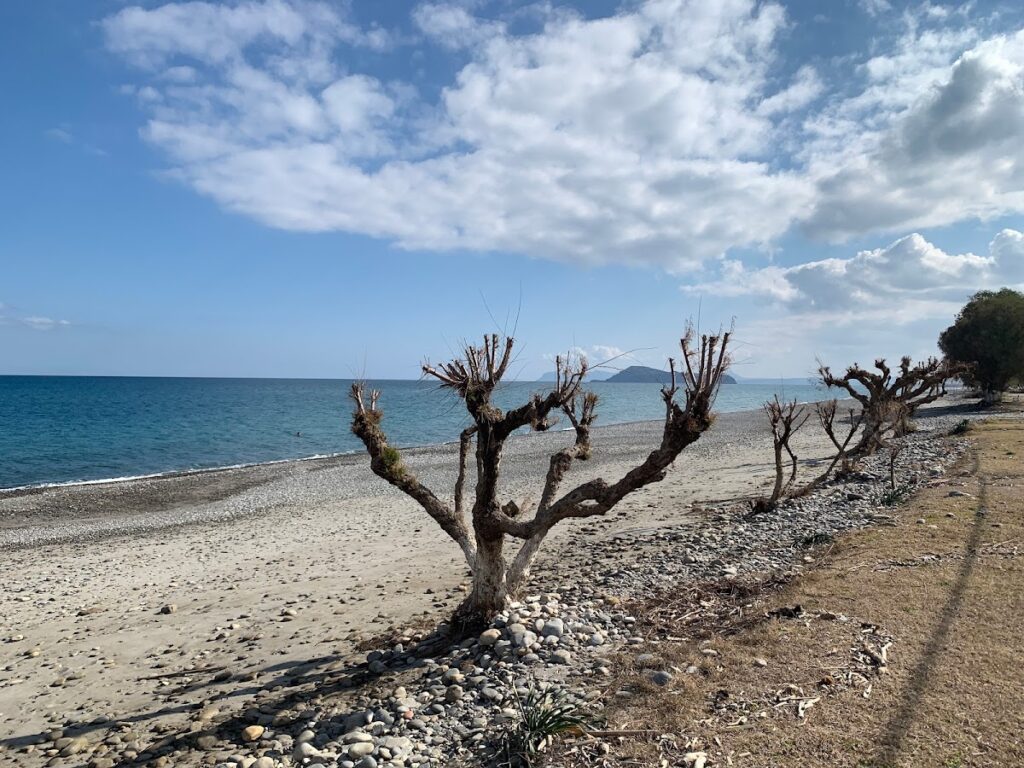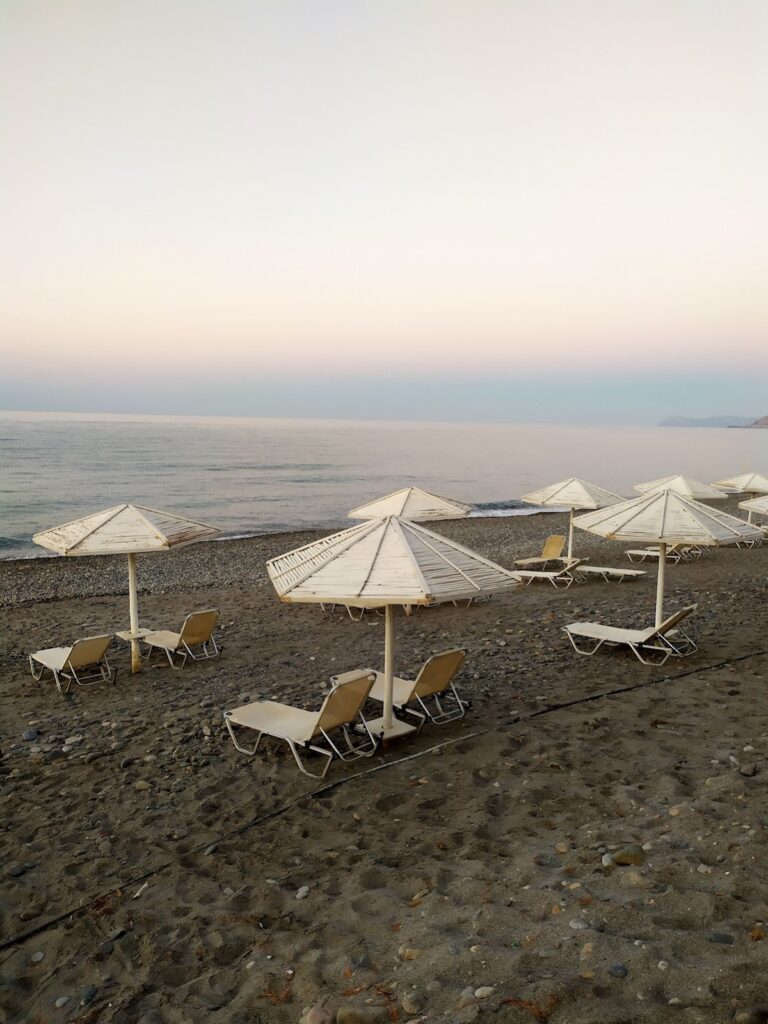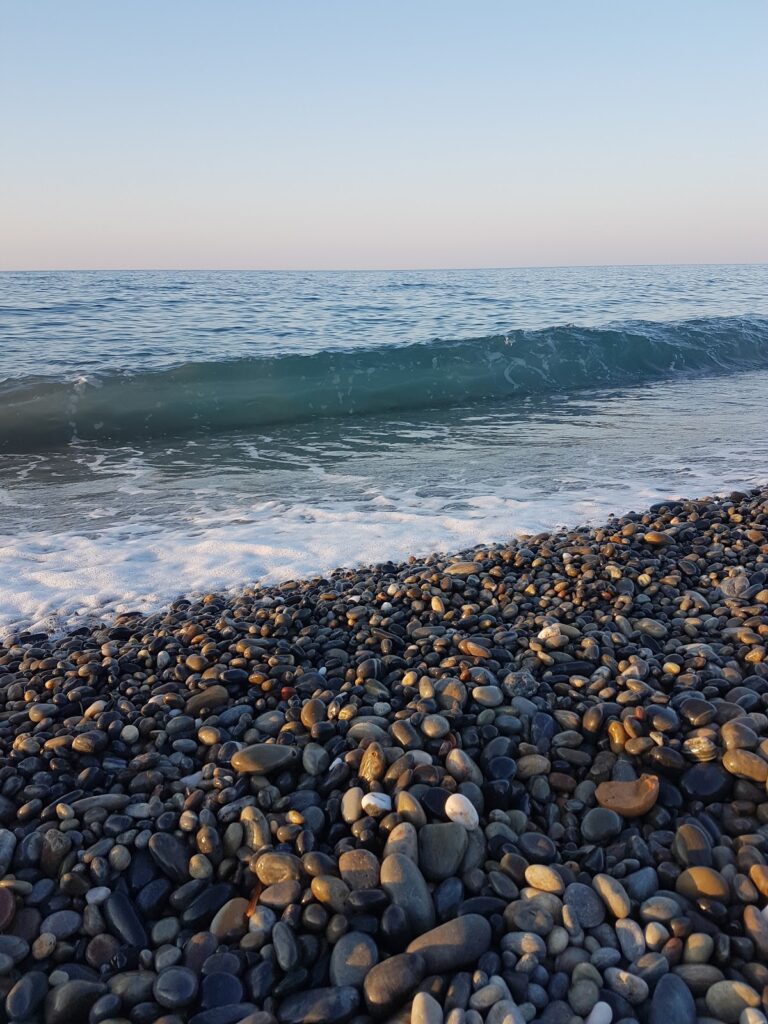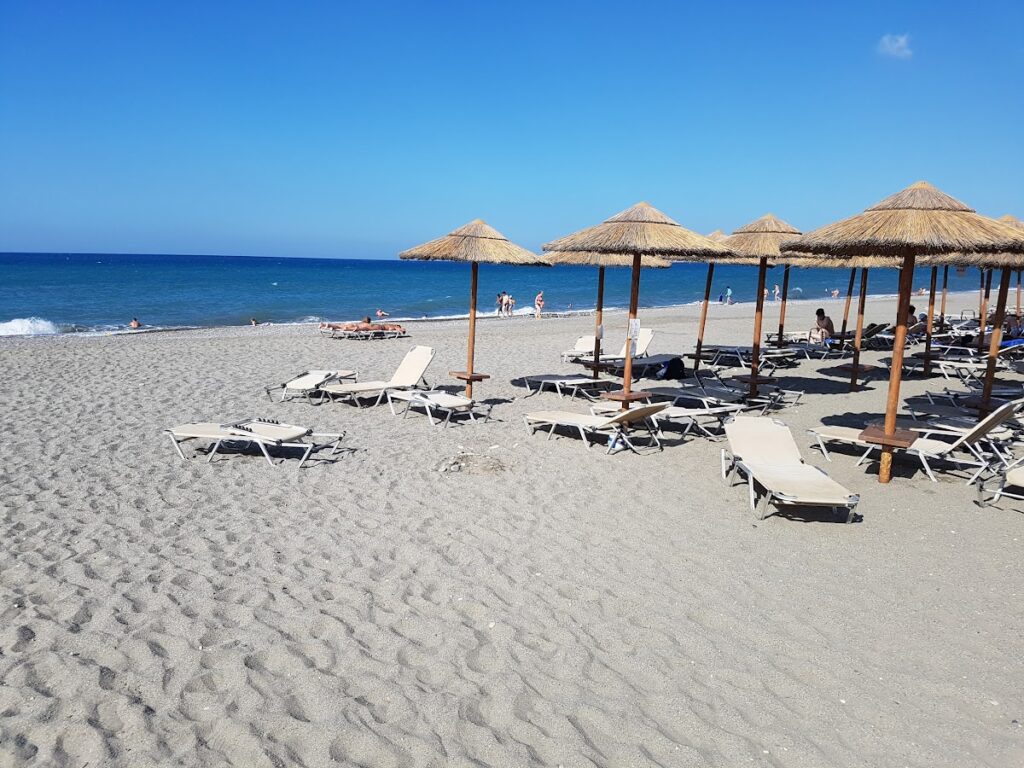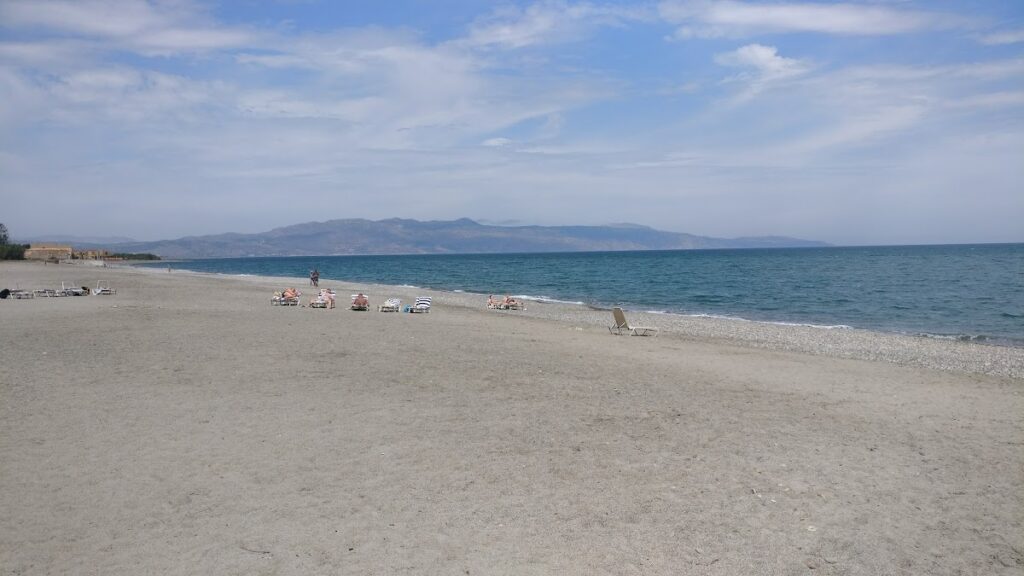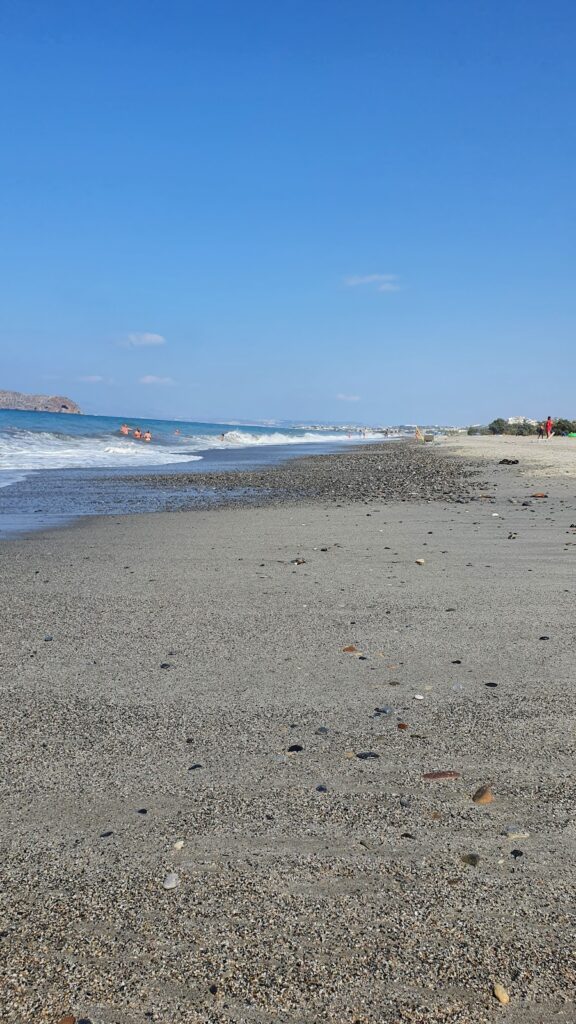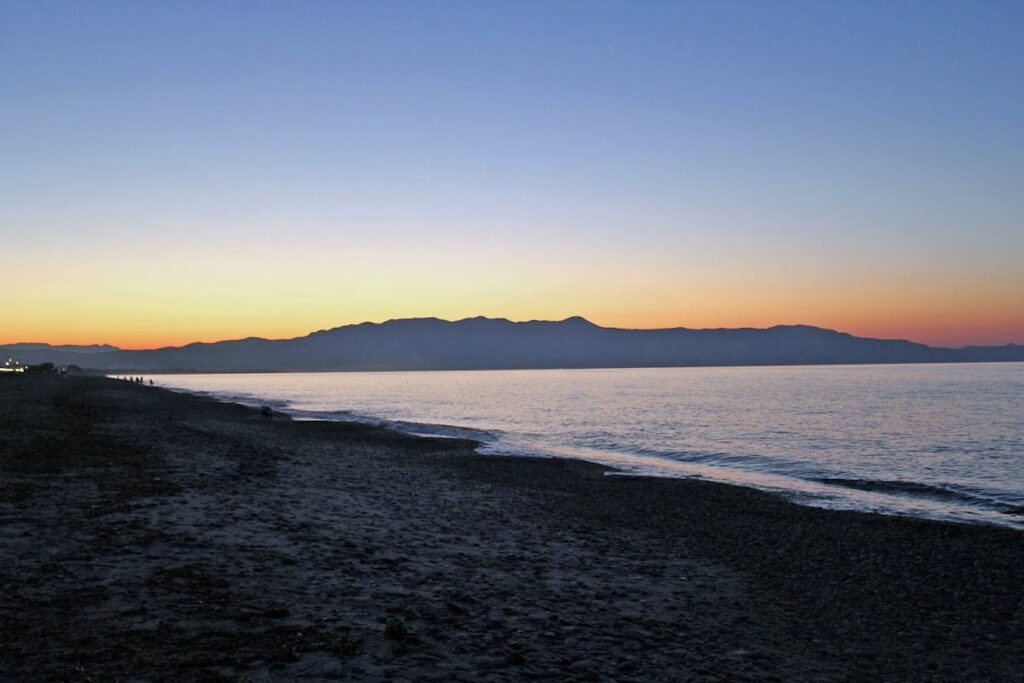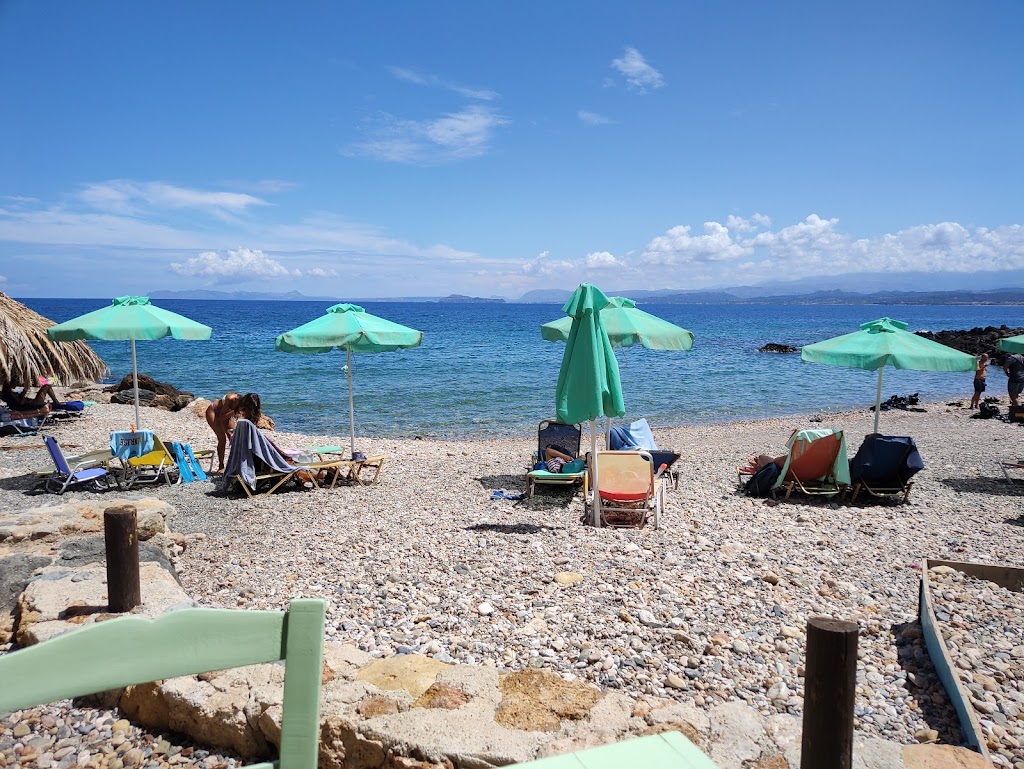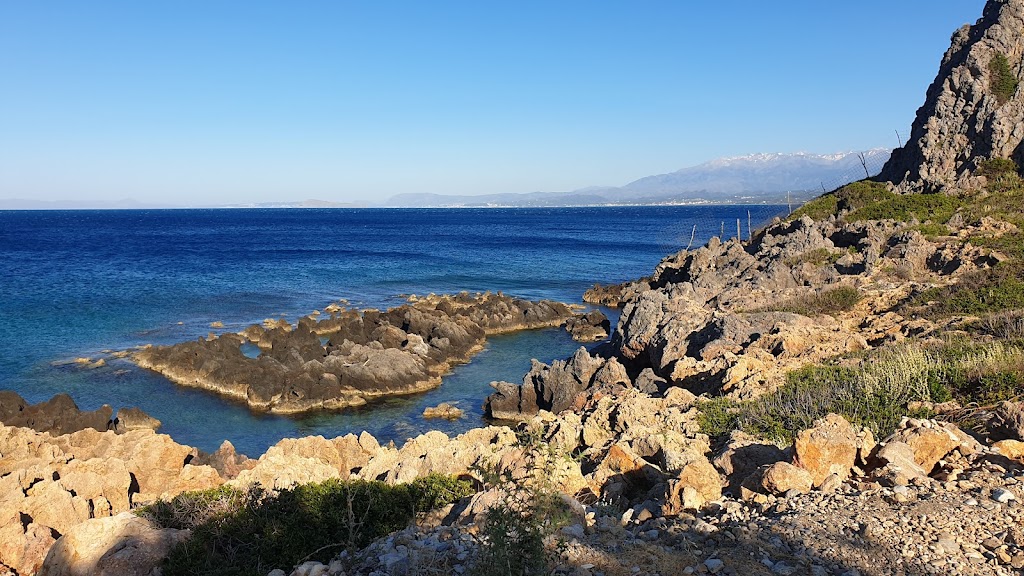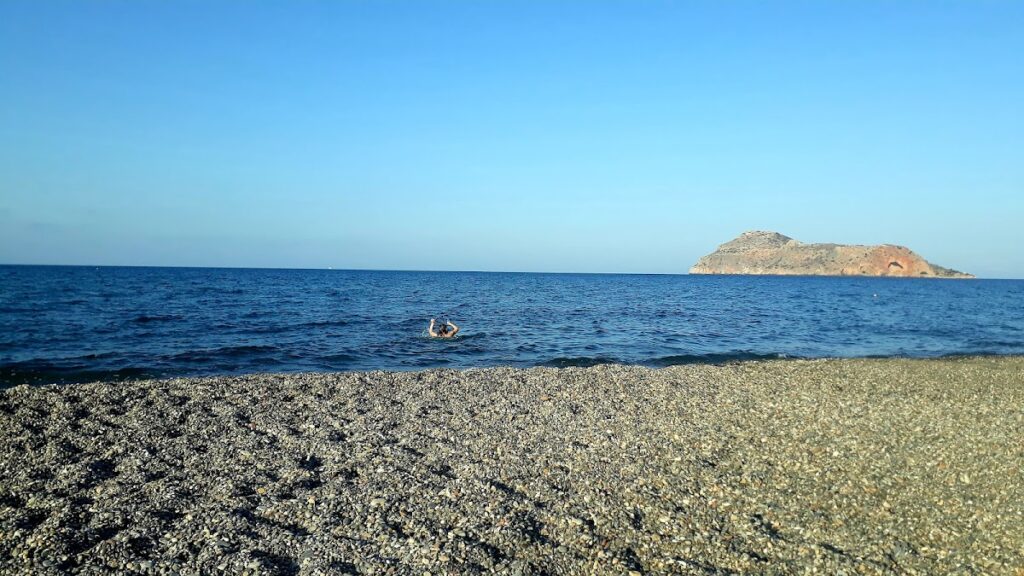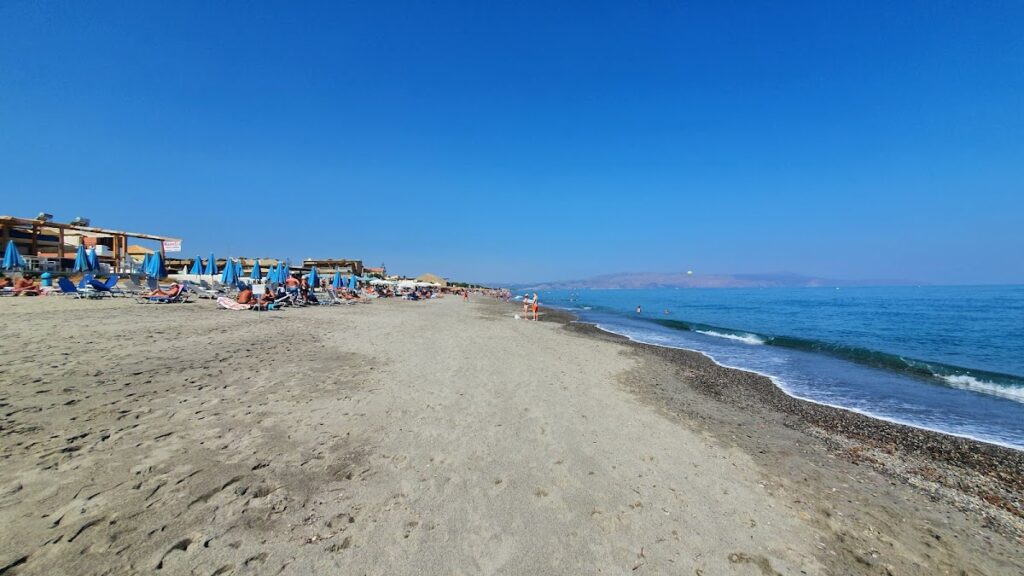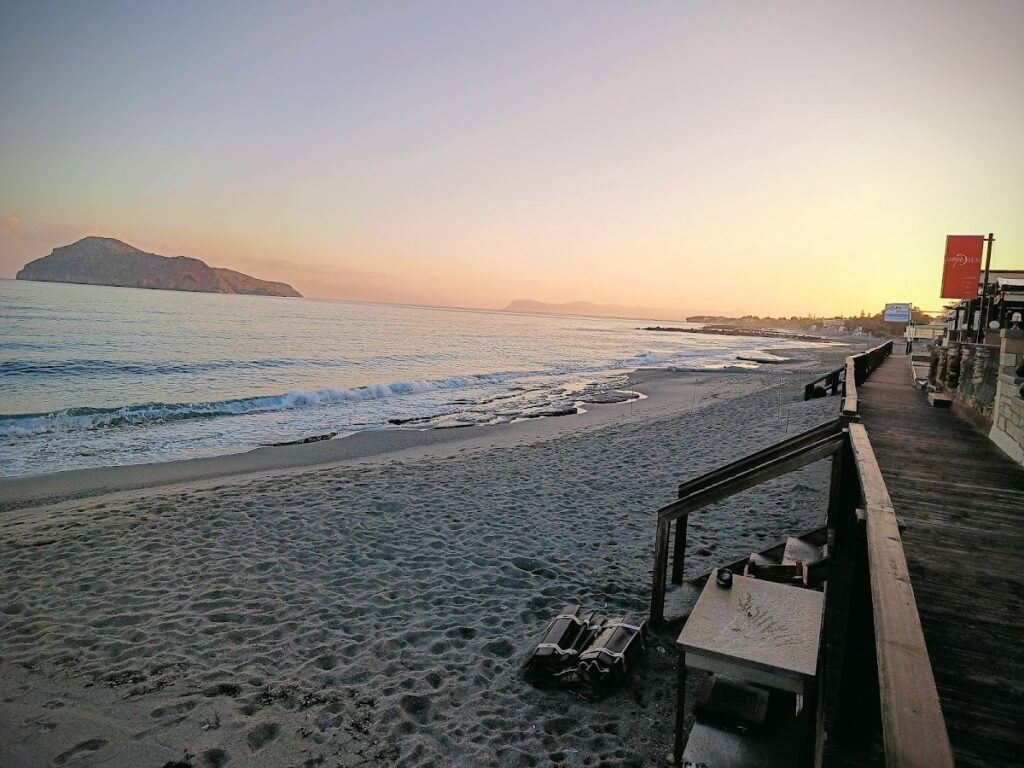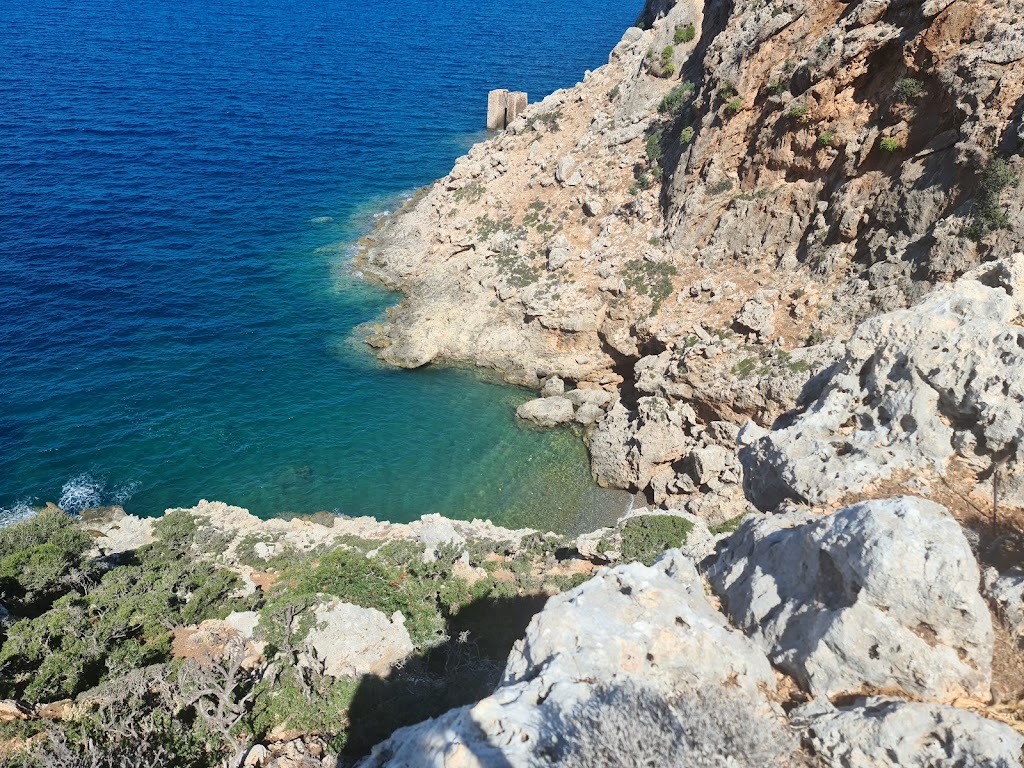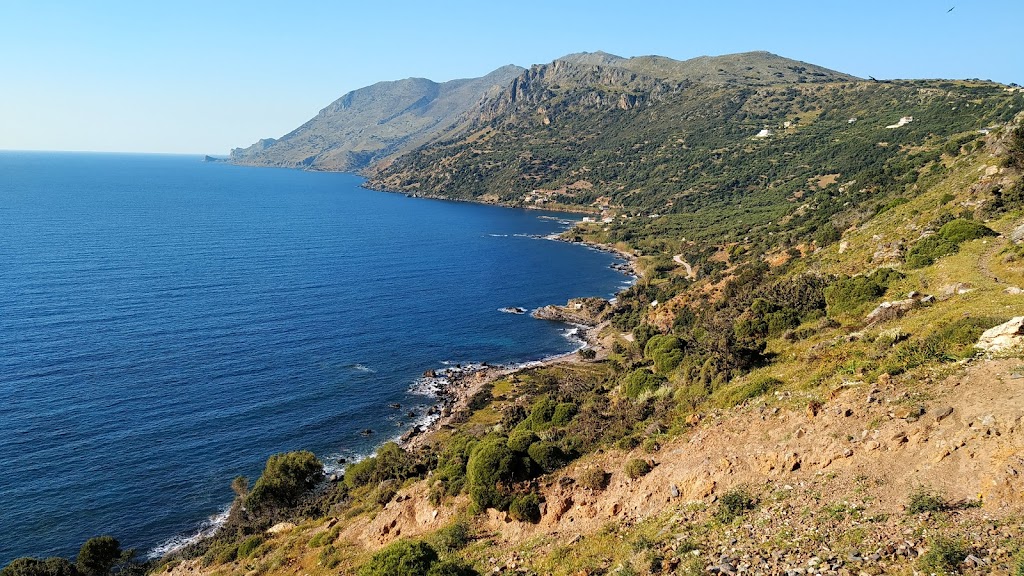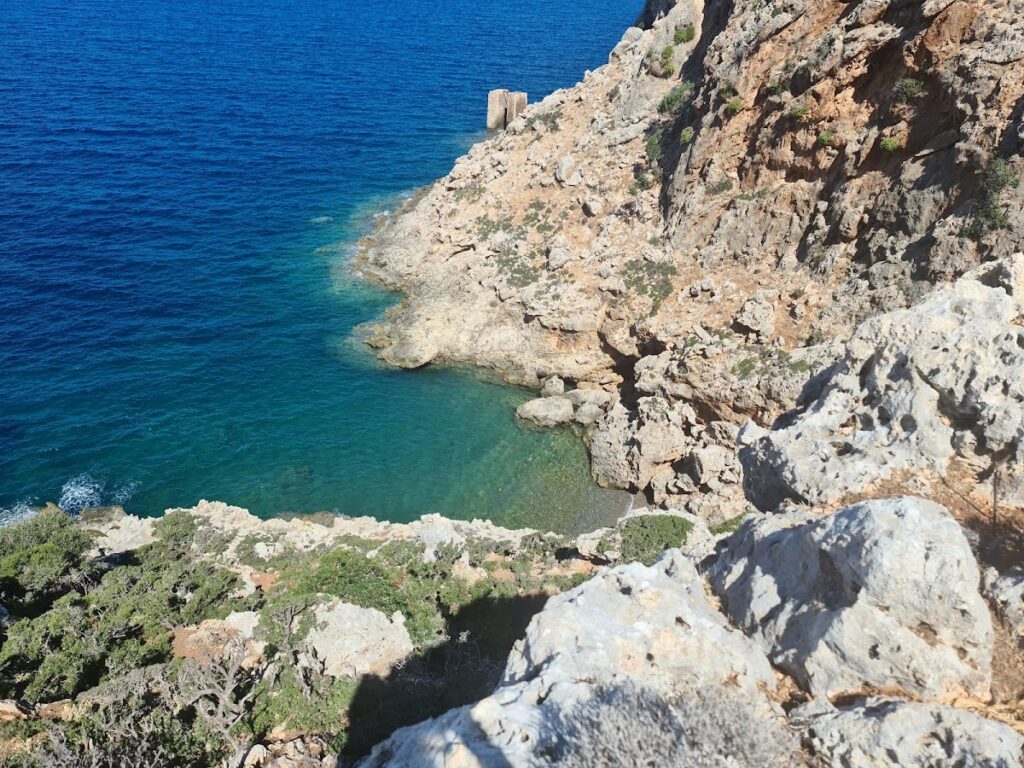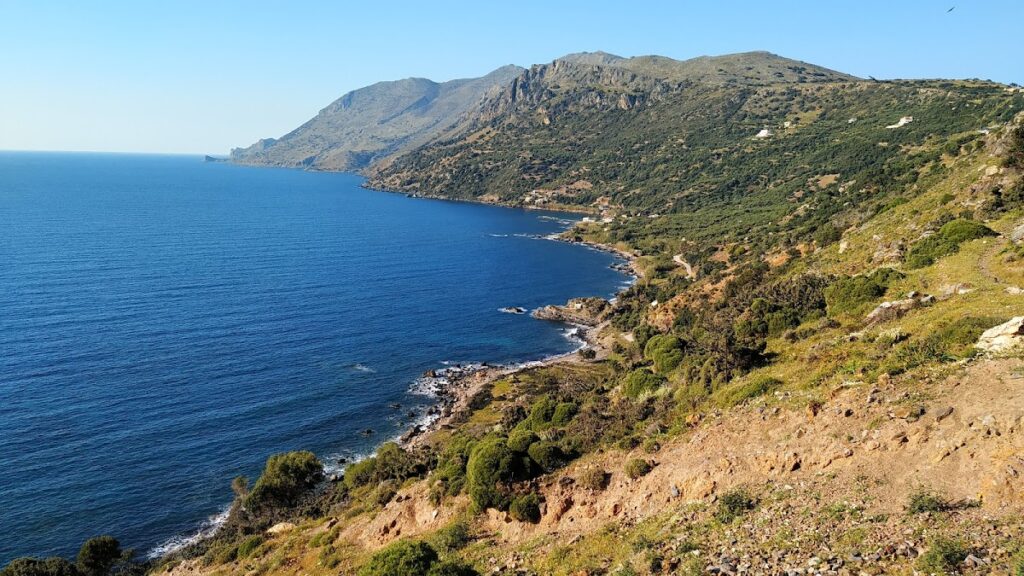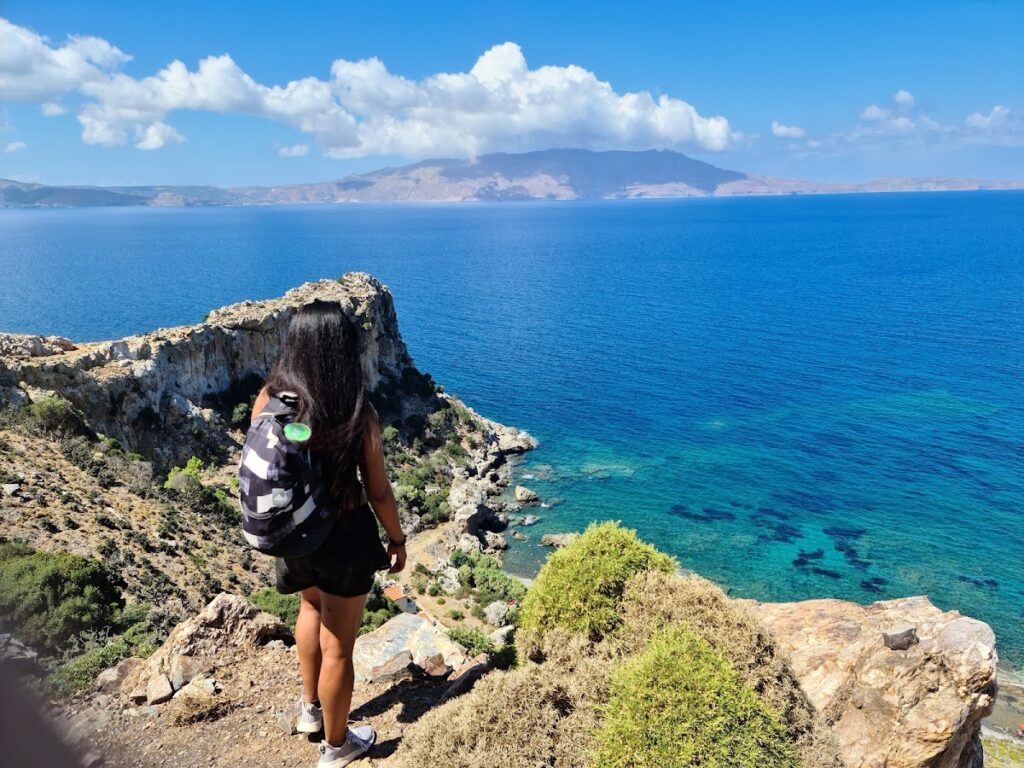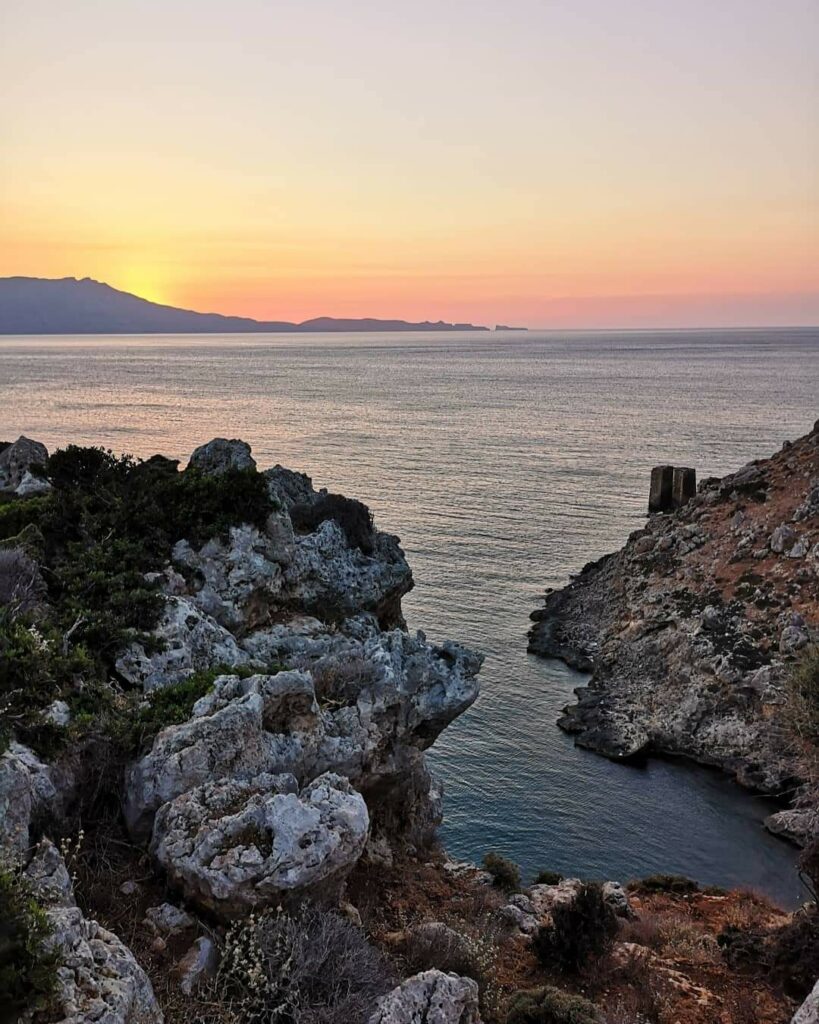Beaches near Tavronítis, in Chania region
Here is list of closest beaches to Tavronítis
- 820 m
- Tavronitis beach
- Fine Pebbles, Sand
- Normal
- Blue
Tavronitis beach, found 20km west of Chania, is situated on the western side of the historic Maleme airport, one kilometer north of the village of Tavronitis and is named after the Tavronitis river that flows nearby. This long, pebbly beach is just a segment of the expansive coastline that stretches from Kolimbari to Stalos, making it an ideal swimming spot, especially during calm weather as the northern coast of Crete often experiences waves. There are ample amenities nearby, including hotels, tavernas, restaurants, and a variety of tourist facilities.
The beach holds historical significance as it is near Maleme airport, the site of a significant resistance against the German forces in 1941, known as the Battle of Crete. This marked the first time in World War II where the local population fiercely resisted the German army, causing them heavy losses. Despite this, the Germans managed to gain control of a small area east of the Tavronitis river and the airport. Today, visitors can pay their respects at the German cemetery and other monuments dedicated to this historic event.
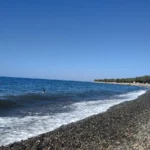
- 2.2 km
- Maleme beach
- Fine Pebbles, Sand
- Normal
- Blue
Situated 18km west of Chania, Maleme forms part of the expansive beach that stretches from Kolimbari to the vicinity of Chania. This lengthy bay is adorned with stunning sandy and pebbly beaches, although they are exposed to frequent northerly winds. The beach at Maleme is sandy and the surrounding area is well developed, with all necessary amenities conveniently located near the beach. For those seeking a more secluded spot for a swim, the west end of the beach, adjacent to the old military airport, offers a quieter location.
The name Maleme is believed to derive from the word “Malama”, translating to gold, hinting at the possibility of a gold mine existing in ancient times, although this hasn’t been confirmed. In addition, a domed tomb from the late Minoan period has been discovered near Maleme. Despite having been looted, two cylindrical seals depicting running wild animals were found by archaeologists.
During World War II, Maleme held significant historical importance. It was home to the Allies’ military airport until it was seized by German forces. The Battle of Crete in 1941 saw German paratroopers descend upon Maleme to gain control of the airport. They were met with fierce resistance from local Cretans and Allied forces, leading to substantial casualties on the German side. With only rudimentary weapons at their disposal, the local Cretans dealt a significant blow to the German paratroopers, which drew praise for Cretan patriotism from Hitler himself. This marked the first time in the Second World War where German forces faced strong resistance from a local population. It was also the first large-scale airborne invasion in history, and the last of its kind. The German Cemetery, located on a hill near Maleme, is the final resting place for the 4500 German paratroopers who lost their lives. A monument dedicated to fallen RAF airmen can also be found near Maleme, close to the River Tavronitis bridge.

- 2.2 km
- Rapaniana beach
- Fine Pebbles, Pebbles
- Normal
- Blue
The expansive beach in Rapaniana, situated 20km west of Chania and 4km east of Kolimbari, is a part of the larger stretch of beach that extends from Peninsula Rodopos to Chania, incorporating the beaches near the villages of Skoutelonas, Minothiana, and Rapaniana. The beach, featuring a mix of sandy and pebbly areas, is a perfect choice for visitors, especially during calm weather, as the northern coastline frequently experiences waves. It is impeccably clean and equipped with essential tourist amenities like umbrellas, showers, and a lifeguard tower.
Rapaniana and its neighboring beaches serve as nesting grounds for the protected loggerhead sea turtle. The village of Rapaniana offers a variety of services including mini markets, restaurants, accommodation facilities, a health centre, pharmacy, dentist, post office, bank, telephone, and car rental services.
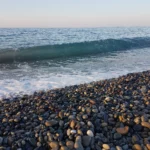
- 3.5 km
- Kolimbari beach
- Fine Pebbles, Pebbles
- Normal
- Blue
Kolimbari, a quaint seaside town housing over 5000 residents, is situated 24km west of Chania, on the eastern edge of the Rodopos Peninsula. This picturesque town is quite developed, primarily due to its stunning, lengthy beach that extends from the village to Tavronitis in the east. The sandy beach at Kolimbari is occasionally dotted with small pebbles, and while the waters are shallow, they tend to be wavy, a typical characteristic of northern Crete’s open beaches. The area adjacent to the beach offers ample choices for accommodation, dining, and entertainment.
For those seeking a more serene beach experience, the tiny coves near the Gonia Monastery, just 1km northwest of Kolimbari, are worth visiting. Boats frequently depart from the Kolimbari port to the Rodopos Cape, renowned for its majestic cliffs and tranquil beaches, with Menzies being the most popular.
The historic Gonia Monastery, reminiscent of a fortress, is located 1km northwest of the town. It’s dedicated to the Virgin Mary Odigitria, also known as the Guide, and houses a notable collection of Byzantine icons. The Orthodox Academy of Crete, a venue for nationwide and global conferences on theological and general topics, is also located near Gonia.

- 5.9 km
- Gerani beach
- Fine Pebbles, Sand
- Normal
- Blue
Situated 13 km west of Chania city, nestled between Maleme and Platanias, lies the quaint coastal village of Gerani. The village is nestled in a lush valley filled with olive and citrus groves, which were once the primary source of income for the villagers. Today, tourism drives the economy of Gerani.
Stretching across 2.5 km, Gerani’s beach is known for its beautiful sand and crystal-clear water. The beach is equipped with numerous amenities such as umbrellas, showers, beach bars, water sports facilities, and lifeguards, making it an ideal destination for family vacations. Several tamarisk trees provide shade, and for those preferring less crowded spots, there are unorganized parts of the coast. However, visitors must tread carefully, as the sandy beach serves as a nesting ground for the Caretta caretta turtles from May to September.
The village of Gerani got its name from a simple water-pumping method used in the village. The method involved the use of a wooden fork and a horizontal piece of wood, with a rope tied at one end to a bucket and a counterweight at the other end.
Historically, Gerani is thought to be the site of ancient Kydonia, according to some scientists. It is also believed that the village once housed a temple dedicated to Goddess Vritomartis, the Cretan counterpart of Goddess Artemis.
The village witnessed a battle against the Turks in 1867, where the Cretan rebels emerged victorious. However, fearing retaliation, the locals asked the rebels to leave, leading to the Turks returning and causing havoc. Gerani also holds significance as the place where famed Cretan novelist John Kondilakis started his teaching career in 1885-1886. The school where he taught, located in Pano Gerani, still stands today.
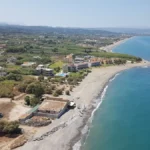
- 6.3 km
- Afrata beach
- Fine Pebbles, Pebbles
- Normal
- Blue
Afrata is a quaint village nestled 3.5km north of Kolymbari and 28km west of Chania, situated at Cape Rodopos. Just 1km east of the village, within a serene bay, you’ll find the charming beach of Afrata.
The beach, with its pebbly terrain and appealing water hues, is a popular spot among locals, as it remains untouched by the area’s winds. The raw beauty of Rodopos Cape, coupled with the tranquil sea and the picturesque village, makes Afrata an ideal destination for a peaceful getaway. The beach features a small canteen for food and water purchases, and shade is provided by umbrellas and tamarisk trees.
The road to Afrata from Kolimbari is paved with asphalt, but caution is advised due to its narrowness. After passing through the village, the road leads to the beach via a stunning gorge. Along the way, just below Odigitria Gonia monastery, you’ll encounter the quiet, rocky coves of Odigitria.
The route from Kolymvari to Afrata also takes you past the historic Panagia Odigitria Gonia Monastery and the Orthodox Academy. The Monastery is a significant part of the island’s history. The Turkish occupation of Crete began here in 1645, and in 1897, it was the landing point of the Greek army, triggering the Greek-Turkish war. Located near Kolymbari port, the Monastery comprises the main temple, an inner courtyard, monks’ cells, and walls that served to protect against pirates, Turks, and other invaders. On the northeast side, within the walls, you can still see the damage caused by the Turkish gunfire against the Monastery.
Additionally, north of Afrata is the Ellinospilios cave, an archaeological treasure trove. However, the path to the cave, due to the region’s rocky landscape, is rather challenging and recommended for experienced walkers only. Specialized knowledge and equipment are necessary for cave entry. The cave’s entrance is positioned just above sea level and the path continues northeast.
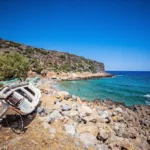
- 7.6 km
- Platanias beach
- Sand
- Normal
- Blue
Platanias, a coastal hamlet situated 11km west of the city of Chania, has seen a significant surge in tourism in recent years, transforming it from a quaint village into a bustling suburb of Chania. Its close proximity to the city, coupled with its stunning beach and frequent bus services from Chania, have made it the most favoured beach near the city. The original village, nestled on a hillside, offers a breathtaking view of the sea and the islet of Thodorou.
The beach in Platanias is an attractive stretch of sandy shore dotted with hotels of varying class and standard tourist facilities. Beachgoers can avail of all the amenities typical of well-organized beaches, including beach bars, umbrellas, showers, snack bars, lifeguards, and water sports. On the eastern side of the local harbour, near Agia Marina, swimmers can enjoy several small, man-made coves. In the summer, the area’s nightclubs come alive, hosting thousands of both Greek and foreign party-goers who dance until daybreak.
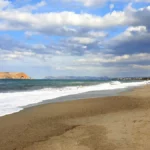
- 8.5 km
- Ravdoucha beach
- Pebbles, Rocks in places
- Normal
- Blue
Ravdoucha’s beachfront, situated approximately 21km west of Chania and close to the village of Ravdoucha on the peninsula Rodopos’ western coast, offers truly splendid scenery. The area is characterized by its towering mountains, rugged rocks, and olive groves, and is peppered with several small bays featuring beautiful rock formations and pebbly beaches. The sea, regularly influenced by the western winds, provides an excellent spot for snorkelling. Ravdoucha also boasts several renowned fish taverns and basic tourist facilities. Although there are no umbrellas on the beach, shade can be found under the trees.
One can reach Ravdoucha by car via a well-maintained paved road from the Chania – Kisamos highway. The village is constructed on a height, providing an overlook to the sea. En route to the beach, travellers will encounter the cave-like chapels of St Marina and St Onoufrios, which are worth photographing.
The northernmost beach in the area, named Neratzia after a small tavern of the same name, is a peaceful sandy beach. There’s a small pier on the side that serves as a modest harbour.

- 8.7 km
- Agios Vasilios and Skotini beaches
- Pebbles, Rocks in places
- Normal
- Blue
Within the region spanning from Ravdoucha to Nopigia, numerous hidden coves with petite beaches emerge, primarily featuring pebbles and a rocky seabed. The road from Nopigia runs parallel to the coastline, offering breathtaking sea views until it reaches the church of Panagia Myrtidiotissa at Choni location, and it continues only a short distance further. From this point, a walk will lead us to the renovated chapel of Saint Basil situated on the beach. To get there, we first hike up a rather rough dirt road and then descend towards the beach where the chapel is roughly in the center. This beach is adorned with large pebbles and an eye-catching rocky seabed.
To the north of Agios Vasilios, a minor stream forms that can be accessed on foot from the Ravdoucha region. Where this stream meets the sea, the small pebbled beach of Skotini takes shape, counted amongst the most stunning hidden beaches in Western Crete. A few meters further north, at the edge of a peninsula, remnants of an early 20th-century iron ore mine can be found. The base of the loading platform still stands in the sea. In the past, a small community of mine workers resided here, but it is now abandoned.

- 8.8 km
- Skotini beach at Ravdoucha
- Fine Pebbles, Pebbles
- Normal
- Blue
Skotini, a stunning beach, is nestled between Ravdoucha and Agios Vasilios at Cape Sideris, near Panagia Myrtidiotissa at Choni. It is found at the end of a narrow, steep gorge. The beach is reachable via a striking trail that begins at Saint Marina (Agia Marina) in Ravdoucha and extends to Nopigia. Approximately 20-25 minutes into the hike, after passing the rock above Ravdoucha beach, you divert from the path and descend towards the dilapidated iron ore transhipment facilities that were operational in the early 20th century. Historically, there existed a small settlement, Skotini, inhabited by mining workers.
Before arriving at the rugged coastline, you’ll discover a sizable cave that provides refuge for the local goats. After cautiously navigating through the mine and natural saltpans, you will reach Skotini beach, noted for its rocks and cavities, and also referred to as Metalio (mine). The beach features pebbles and crystal blue waters. However, it is significantly impacted by the west winds that carry litter across the Kissamos bay. The beach provides an idyllic relaxation spot during the south winds, when the waters are clear.
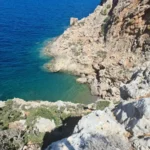
No results available
ResetBeaches in other nearby areas
No results available
Reset